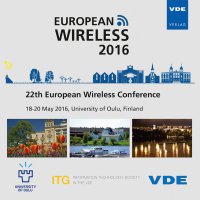Measurement-based Evaluation of the Impact of Large Vehicle Shadowing on V2X Communications
Conference: European Wireless 2016 - 22th European Wireless Conference
05/18/2016 - 05/20/2016 at Oulu, Finnland
Proceedings: European Wireless 2016
Pages: 8Language: englishTyp: PDF
Personal VDE Members are entitled to a 10% discount on this title
Authors:
Rodriguez, Ignacio; Lauridsen, Mads; Wassie, Dereje A.; Chavarria Gimenez, Lucas; Nguyen, Huan C.; Sorensen, Troels B. (Department of Electronic Systems, Aalborg University, Denmark)
Almeida, Erika P. L. (Department of Electronic Systems, Aalborg University, Denmark & Instituto de Desenvolvimento Tecnologico (INDT), Manaus/Brasilia, Brazil)
Mogensen, Preben (Department of Electronic Systems, Aalborg University, Denmark & Nokia - Bell Labs, Research Center Aalborg, Denmark)
Abstract:
Upcoming applications, such as autonomous vehicles, will pose strict requirements on the vehicular networks. In order to provide these new services reliably, an accurate understanding of propagation in the vehicular scenarios is needed. In this context, this paper presents a measurementbased evaluation of large vehicle shadowing at 5.8 GHz in V2X scenarios. The receiver antenna height is fixed to average vehicular height (1.5 m), while the transmitter antennas are located at different heights (1.5, 5, and 7 m) in order to investigate both V2V and V2I scenarios. A truck was used to obstruct the LOS between transmitter and receiver, and a large number of geometrical combinations of the scenario were explored. The statistical analysis of the measurement shows how in the V2V case, the experienced shadow levels are approximately 5 dB higher than in the V2I scenarios, where the shadow levels depend on the transmitter antenna height, reaching maximum values of 21-23 dB. The statistical analysis also shows that the differences in shadow level due to the non-symmetries of the obstacle truck are in the order of approximately 2 dB. A simple 3D ray-tracing simulation is validated against the measurements, showing a good match with a RMSE of 4.1 dB. Based on both measurements and ray-tracing data, a simple deterministic shadowing model, useful for implementation in system level simulators, is presented, as a first step towards a more dynamic and scalable shadowing model.


